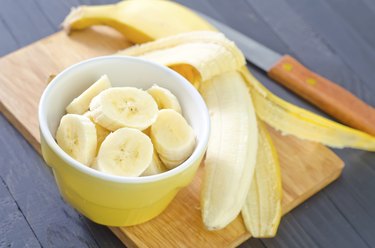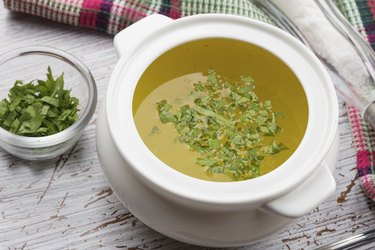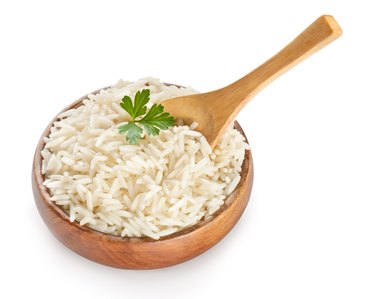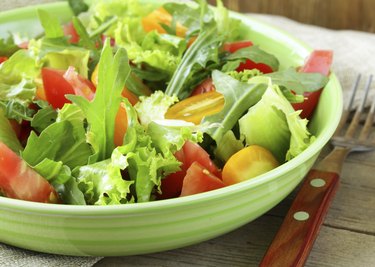
Salmonella infection, one of the most common kinds of food poisoning, is caused by ingesting Salmonella bacteria, often from foods such as raw or undercooked meat or poultry. The symptoms of Salmonella infection include abdominal pain and cramps, muscle pain, chills, fever, nausea and vomiting. If you contract Salmonella poisoning, you will need to stay hydrated and eat a bland diet, at least until the initial symptoms go away.
Replace Fluids
Video of the Day

When you have Salmonella poisoning, you may not feel like drinking or eating anything at first. The vomiting and diarrhea typical of Salmonella infection can easily lead to dehydration. Losing too many fluids can be dangerous, especially for older people, young children and anyone with a serious illness or a compromised immune system. The National Institutes of Health recommends drinking eight to 10 glasses of clear fluid, preferably water, every day, and advises drinking a full cup of water whenever you have a loose bowel movement. Other choices besides water include plain broth, watered-down juice or sports drinks.
Video of the Day
Choose Bland Foods

If you are vomiting, stay off solid foods until the vomiting goes away, according to FamilyDoctor.org. Gradually reintroduce solid foods once you can keep them down. Your doctor may recommend a diet of bland, easily digested foods. This is sometimes called the BRAT diet, for Bananas, Rice, Applesauce and Toast. These are "binding," low-fiber foods that can help ease diarrhea. Avoid sugary foods, high-fat or greasy foods, dairy products and high-fiber foods, which can make nausea or diarrhea worse.
Replace Salt and Potassium

The fluid lost in vomiting and diarrhea can affect levels of sodium and potassium, the electrolytes your body needs. Eating salty foods such as pretzels and soda crackers can help you replace sodium. Foods such as bananas, boiled potatoes without the skin, applesauce and fruit juices can help replace potassium.
Get Back to Regular Food Slowly

As the symptoms of Salmonella infection subside, start gradually reintroducing regular foods to your diet. NIH recommends avoiding three big meals at first. Eat smaller, more frequent meals over the course of the day. The BRAT diet is low in some essential nutrients, according to FamilyDoctor.org, and you should follow it only as long as you need to. Although Salmonella infection takes five to seven days to completely clear up, you'll probably be able to start eating regular foods within a day or two after having vomiting or diarrhea.
Is this an emergency? If you are experiencing serious medical symptoms, please see the National Library of Medicine’s list of signs you need emergency medical attention or call 911.